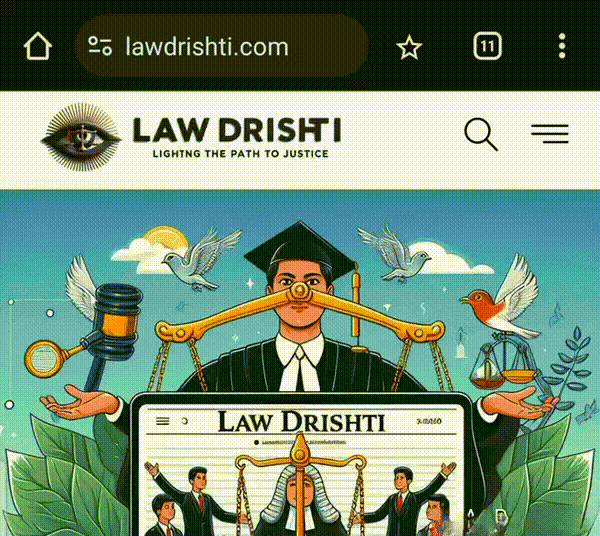The Associate – Litigation & Insolvency Recruitment 2025 is now open at NM Law Chambers, a New Delhi-based full-service litigation firm. Founded in 2019 by Neeha Nagpal and Malak Bhatt, the firm is known for its strong expertise in commercial litigation, insolvency law, and white-collar crime advisory. The firm regularly represents clients before the Supreme Court of India, various High Courts, NCLAT, and NCLT.
This position is ideal for young legal professionals with 1–2 years of post-qualification experience who want to advance their careers in a dynamic litigation environment.
About NM Law Chambers
NM Law Chambers is a boutique law firm specializing in:
- Commercial litigation and disputes
- Insolvency and Bankruptcy Code (IBC) matters
- White-collar crime defence and advisory
Since its inception, the firm has built a reputation for strategic advocacy and client-focused legal solutions. Associates at NM Law Chambers gain hands-on exposure to high-stakes litigation and insolvency practice.
Associate – Litigation & Insolvency Recruitment 2025: Vacancy Details
- Organization: NM Law Chambers
- Location: Nizamuddin East, New Delhi (On-site, Full-time)
- Position: Associate – Litigation & Insolvency
- Experience Required: 1–2 Years PQE
- Joining: Urgent – Not later than 5 October 2025
- Vacancies: 01
Eligibility Criteria
To apply for the Associate – Litigation & Insolvency Recruitment 2025, candidates must meet the following requirements:
- Education: LL.B. from a recognized university
- Experience: 1–2 years of post-qualification experience
- Preferred Skills & Experience:
- Prior experience in drafting and filing petitions/applications
- Exposure to commercial litigation, insolvency practice, or white-collar crime defence
- Strong research and writing skills
Key Responsibilities
The selected candidate will be responsible for:
- Drafting petitions, applications, and legal notices
- Assisting in litigation strategy and court proceedings
- Supporting senior lawyers in matters related to commercial disputes, insolvency, and white-collar crime
- Handling filings, procedural coordination, and client communication
Salary & Benefits
- Salary: Not disclosed (commensurate with experience)
- Work Environment: Dynamic litigation team with exposure to Supreme Court, High Courts, NCLT, and NCLAT matters
- Growth Opportunities: Hands-on mentoring and opportunities in complex litigation and insolvency law practice
Important Dates
- Application Deadline: 28 September 2025
- Joining Date: Not later than 5 October 2025
How to Apply
Interested candidates for the Associate – Litigation & Insolvency Recruitment 2025 must send their updated CV to the following email address:
- Email ID: sukanya@nmlawchambers.in
Why Join NM Law Chambers?
- Litigation Exposure: Work on matters before Supreme Court, High Courts, NCLT, and NCLAT
- Specialized Practice Areas: Focus on commercial litigation, insolvency, and white-collar crime defence
- Career Development: Direct mentorship from experienced founders and senior associates
- Challenging & Rewarding Work: Opportunity to work on high-profile cases in insolvency and litigation practice
Conclusion
The Associate – Litigation & Insolvency Recruitment 2025 at NM Law Chambers offers a strong platform for young legal professionals looking to advance their careers in litigation and insolvency law. With direct exposure to complex cases, high courts, and NCLT/NCLAT proceedings, this role provides an excellent opportunity for professional growth.
Apply before 28 September 2025 and join NM Law Chambers’ growing litigation team in New Delhi.
To apply for the Associate – Litigation & Insolvency Recruitment 2025, candidates must meet the following requirements:
- Education: LL.B. from a recognized university
- Experience: 1–2 years of post-qualification experience
- Preferred Skills & Experience:
- Prior experience in drafting and filing petitions/applications
- Exposure to commercial litigation, insolvency practice, or white-collar crime defence
- Strong research and writing skills
Key Responsibilities
The selected candidate will be responsible for:
- Drafting petitions, applications, and legal notices
- Assisting in litigation strategy and court proceedings
- Supporting senior lawyers in matters related to commercial disputes, insolvency, and white-collar crime
- Handling filings, procedural coordination, and client communication
Salary & Benefits
- Salary: Not disclosed (commensurate with experience)
- Work Environment: Dynamic litigation team with exposure to Supreme Court, High Courts, NCLT, and NCLAT matters
- Growth Opportunities: Hands-on mentoring and opportunities in complex litigation and insolvency law practice





